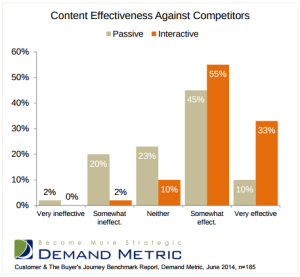— December 16, 2017
Employee advocacy has continued to grow and be an important strategy for companies to implement. Especially as social media continues to be a popular aspect to most businesses, employee advocacy is no longer just a “trend.”
Many large and recognizable companies like Dell, Adobe, and others understand the importance of employee advocacy and have seen significant success.
Yet, employee advocacy is also a time-consuming process and success comes with dedication to the long game.
And during this initiative, it’s also easy to make some mistakes that could hinder your positives results and ROI.
The best way to prevent mistakes is to study the patterns of people who have been there before you.
Here are the most common mistakes that our customer success managers and community of experts come across.
Asking All Employees to Be Social
Not every employee wants to be social—if you try to force them into becoming more visible on social media, they’ll only become annoyed or overwhelmed.
Additionally, some employees are not into being noticed on social and feel uncomfortable doing so. By trying to “require” everyone to get involved, you can be alienating employees and making them feel “boxed-in.”
Resist impulses to encourage everyone to share, and make employee advocacy optional for employees who are interested in becoming public-facing influencers within your community.
Respect your boundaries as an employer, and remember that an employee’s social media activity isn’t a reflection of his or her self-worth.

TeroVesalainen / Pixabay
Trying to Solve a Culture Problem with a Tool
A big challenge for companies is if there is a culture problem internally, an employee advocacy platform will not solve that problem.
In fact, if people at your company do not believe in the mission, feel disconnected, or recognize lack of company transparency, a tool will not work.
It’s important to get executives of your company on board and work on correcting the company culture before addressing employee advocacy with a platform.
Additionally, larger businesses tend to not be able to operate quickly when it comes to tech changes.
The company may recognize the value and need for getting their workforce on social, but it requires a lot of decision-makers like management, communications, and legal before anything can take place.
Because of that challenge, many organizations find it near impossible to be a social business.
Yet, these views can be corrected.
Give employees space and flexibility that they need to take ownership of their own social media identities.
Recognize, that as an organization, rigidity over an employee’s Facebook, Twitter, or LinkedIn presence is a major overstepping of boundaries.
Instead, come up with a set of policies that reflect what your organization needs from a privacy, compliance, and security standpoint. With this very minimal set of guidelines, give employees the freedom to have discretion with their social media accounts.
Not Having a Tool in Place
If your company culture is in a great place and executives are on board, another mistake is not valuing the importance of a tool to make employee advocacy easier.
The current status quo in employee advocacy is for marketing team members to email the rest of their companies with recommended content to share. This process simply doesn’t work for two reasons:
- The first is that workplaces are dealing with information overload, meaning that team members won’t necessarily remember to share something that they discover via email—not to mention, an email feels a bit forced.
- Secondly, employees don’t want to be loudspeakers for their employers. While it makes sense for them to share company-branded content from time to time, they’ll want to keep this level of self-promotion in check.
You’ll want a platform that can help you curate interesting, industry-related content from known sources within and outside of your organization.
Rather than positioning employees as loud-speakers for your organization, an employee advocacy platform will empower teams to be community advocates and educators within the space that your company operates.

Photo-Mix / Pixabay
Treating Employee Advocacy Like Marketing
Traffic, brand awareness, lead generation, and sales, are indirect by-products of an employee advocacy program.
Rather than approaching this channel like any other system for driving ROI, it’s important to take a step back and design your strategy around the benefits to your employees.
Employee advocacy should, at its heart, position your team members as educators, influencers, and thought leaders. It’s an investment in them as leaders, professionals, and most importantly, individuals.
Don’t design your employee advocacy to be a pure sales channel either. If you’re too fixated on ROI, you’ll risk chasing sales and sales alone.
By focusing more on your employees, you’ll see improved marketing results and employee engagement.
Forgetting the Sales Equation
As mentioned above, I told you to avoid treating employee advocacy like a marketing channel.
While that is important, it is, however, important to incorporate employee advocacy into your sales initiatives by asking account managers and sales reps to share content.
To stand out, your brand needs to be extremely trustworthy.
Your marketing presence has to achieve the same outcome of a heartfelt handshake or warm hug—which can be extremely challenging to do in a digital environment when your sales reps are limited to short emails, sales decks, and automated campaigns.
Here’s where the idea of social selling comes in.
Contrary to what the name suggests, social selling isn’t about using social media to blast your company’s sales agenda. In fact, the concept is simply an updated look at an age-old idea — that relationships drive sales success.
Final Thoughts
Employee advocacy is a rewarding strategy for businesses to implement and can help boost lead quality, web traffic, brand awareness, and help with social recruiting.
Yet, as great as the results are, it’s easy to make mistakes that can have a negative impact on your company’s employee advocacy success.
But, with the five above mistakes listed, you can quickly avoid those issues in your own instance and remedy any mistakes to get your company on the right path.
Want to learn how to build your employee advocacy program? Turn your workforce into a social media powerhouse with this complete guide.
Business & Finance Articles on Business 2 Community
(62)






